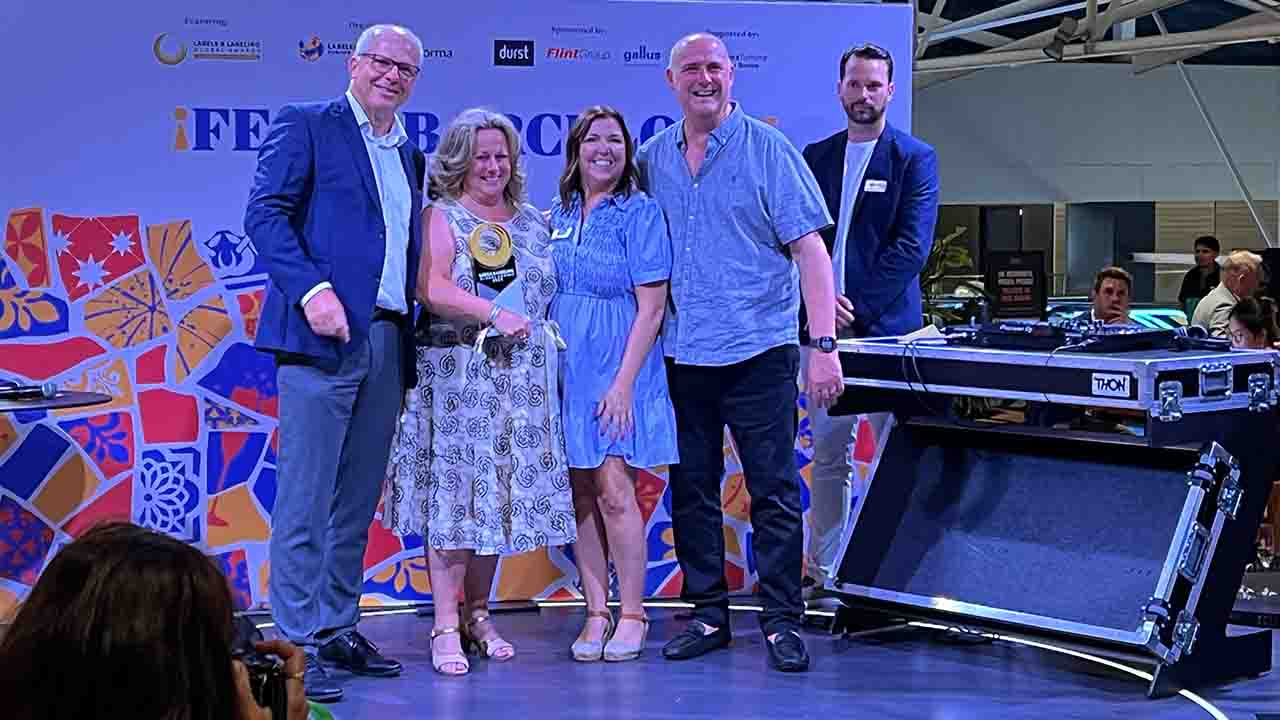KBA hosts carton innovation seminar

Around 300 printers and print buyers gathered in Radebeul, Germany for an update on the innovations in manufacturing and finishing of folding cartons for food and non-food products.
Steffen Rapp, sales director of Smurfit Kappa Carton explained the virtues of Multiprint and Twin Coat recycled board, describing them as high-performance products. Until now this term has usually applied to board made of virgin fibers, but the two new types of recycled board closely resemble coated chromo board in terms of both print performance and surface qualities. They both have a high degree of whiteness, good opacity, optimum absorbency, a smooth surface and high gloss. Layer integrity during impression is good and there is very little blanket contamination from paper dust, so cleaning intervals are exceptionally long and press capacity can be exploited to the full.
Recycled board is a resource-friendly product, being made not only from renewable raw materials, but reusable ones as well. It is also far less energy-intensive to produce than virgin board, and can be used to package all types of products, even foodstuffs. So it is a viable alternative to virgin board.
Antje Kersten, a chemist from Darmstadt University specializing in papermaking and mechanical processing technology, spoke of defining, evaluating and reducing the use of mineral oils in food packaging. Research has shown that food packed in cartons may contain traces of mineral oils whose potential negative impact for the consumer is not yet known. Such traces of mineral oil may stem from the inks used to print the cartons, or from recycled board with a high newsprint content. She explained how the presence of mineral oils in the various offset processes depends on the composition of the printing inks used.
At present, problems in analyzing mineral oils are due partially to the lack of threshold values for such oils in paper and board, and standardized methods for measuring compounds of mineral oil saturated hydrocarbons (MOSH) and mineral oil aromatic hydrocarbons (MOAH). Migration by mineral-oil components from packaging to food depends on various factors, including packaging design, the food packaged, the inner lining, the type of transport and secondary packaging used, and storage time and conditions.
There are several ways to reduce mineral-oil migration from food packaging. One is to substitute virgin board for recycled board, or to use recycled board with a low newsprint content. Another is to dispense with mineral-oil based chemical additives during the papermaking process, ink formulation (manufacture) or application (printing). Barrier coatings and inner bags also provide reliable protection. However, many of the steps that could be taken are not yet feasible in terms of sustainable production.
Matteo Piller, product manager for packaging inks at Epple, gave a briefing on two migration-neutral ink series, BoFood MU and SensPrint MU. He detailed the diverse demands on packaging: consumers’ priorities are safety and environmental compatibility. Brand manufacturers seek to avoid conflict with consumers, associations and legislators, and also demand safety. Carton manufacturers need to meet customer specifications, comply with ISO standards and maintain a high and stable output.
Today’s migration-neutral inks are the product of a multiphase development process that started with low-odor inks (Epple’s GA series), which have excellent organoleptic (sensory) and printing properties, do not cause swelling and contain no mineral oils. This makes them suitable for non-food packaging, secondary food packaging, primary packaging with a functional barrier and primary packaging if approved by an independent body. The next step was low-migration inks such as CareFood MAW, which satisfy all legal requirements in Europe and are therefore suitable for direct-contact food packaging. But the ultimate printing inks for food packaging are migration-neutral ones, at present available solely from Epple. The only potentially migratory ingredients in SensPrint MU and BoFood MU are foodstuffs or food additives. In the unlikely event that migration occurs it would only be of odor- and taste-neutral components. The same binding agent ensures that the ink penetrates fast and prints well. BoFood MU and SensPrint MU therefore comply with all current and foreseeable legal requirements and demands from the food sector.
Stay up to date
Subscribe to the free Label News newsletter and receive the latest content every week. We'll never share your email address.

